Reason #5,355 to love Rome – Cemetery of Artists and Poets
It might make one in love with death, to be buried in so sweet a place.
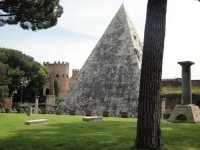 These words, written by the English poet John Keats, refer to his final resting place, officially known as the Non-Catholic Cemetery for Foreigners in Testaccio, Rome. The cemetery, rarely referred to by its official name, is more commonly called the ‘Protestant Cemetery’ or simply the ‘Cemetery of Artists and Poets’.
These words, written by the English poet John Keats, refer to his final resting place, officially known as the Non-Catholic Cemetery for Foreigners in Testaccio, Rome. The cemetery, rarely referred to by its official name, is more commonly called the ‘Protestant Cemetery’ or simply the ‘Cemetery of Artists and Poets’.
The cemetery might truly be one of the world’s most beautiful, nestled along the Ancient Roman Walls and lying in the shadows of the Cestius Pyramid (1st Century BC) and the ancient Gate of San Paolo. Despite the chaotic traffic outside the cemetery walls, within the birds chirp and the beautiful cypresses and Mediterranean pines shade the picturesque gravestones. The cemetery is beautiful and peaceful and makes for a very interesting visit.
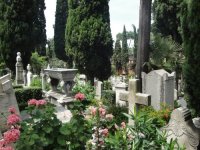 Until the unfication of Italy in 1861, Rome was a Papal State. The cemetery came into being because non-Catholics (not just Protestants, but Jews, Muslims, Orthodox Christians and atheists) could not be buried in Catholic cemeteries. By the 18th century, this spot became the first official resting place for many non-Catholic foreigners residing in Rome.
Until the unfication of Italy in 1861, Rome was a Papal State. The cemetery came into being because non-Catholics (not just Protestants, but Jews, Muslims, Orthodox Christians and atheists) could not be buried in Catholic cemeteries. By the 18th century, this spot became the first official resting place for many non-Catholic foreigners residing in Rome.
Until 1870, there were strict laws governing non-Catholic burials and gravestones. Non-Catholic burials could only be held at night. The symbol of the cross was forbidden and all proposed inscriptions had to be approved by a papal commission.
Large numbers of British, Germans, Americans, Swedes, Dutch and Russians are buried here, many of them residents of Rome, others who had been passing through as tourists and had fallen ill and died. The tombstones are written in various languages and many profess the deceased’s great love for Rome.
The graveyard boasts famous poets, painters, sculptors, philosophers and architects. Keats is one of the most famous. He came to Rome in September 1820, hoping to revive his failing health, but he died only four months later, at the age of 26.
On his deathbed, Keats asked his friend, the painter Severn– who is buried beside him – to look at the place he had selected for his gravestone. Severn returned from theProtestant Cemetery, telling him that the place was filled with wild violets and daisies. Keats was pleased and reportedly said that he “already felt the flowers growing over him.” He also wrote the words carved on his gravestone: “Here lies One whose Name was writ in Water.”
 His fellow poet, Percy Bysshe Shelley died the following year in a sailing accident off the coast of Viareggio. His body was cremated on the beach and, at his wife’s request (Mary Shelley, author of Frankenstein), his ashes were brought to the Protestant Cemetery, where the couple had already buried their son William. On his simple gravestone are engraved three lines from Shakespeare’s The Tempest.
His fellow poet, Percy Bysshe Shelley died the following year in a sailing accident off the coast of Viareggio. His body was cremated on the beach and, at his wife’s request (Mary Shelley, author of Frankenstein), his ashes were brought to the Protestant Cemetery, where the couple had already buried their son William. On his simple gravestone are engraved three lines from Shakespeare’s The Tempest.
The American sculptor WW Story carved the “Angel of Grief” for his wife’s tomb (a replica of the monument is at Stanford University,US). He was later buried here, alongside his wife.
The German philosopher and poet Goethe was a great admirer of Rome and considered burial in this cemetery. In the end, it was his only son August von Goethe who was laid to rest within these ancient walls.
So was Antonio Gramsci, one of the founders of Italian communism.
Generations of artists have made a pilgrimage to this peaceful cemetery. Oscar Wilde called it “the holiest place in Rome” while Henry James wrote of it : “The most beautiful thing in Italy, almost, seemed to me … the 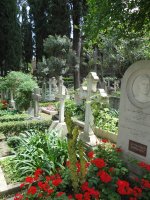 exquisite summery luxuriance and perfect tendance of that spot. I mean, of course, the very particular spot below the great grey wall, the cypresses and the time silvered Pyramid. It is tremendously, inexhaustibly touching – its effect never fail to overwhelm.”
exquisite summery luxuriance and perfect tendance of that spot. I mean, of course, the very particular spot below the great grey wall, the cypresses and the time silvered Pyramid. It is tremendously, inexhaustibly touching – its effect never fail to overwhelm.”
I couldn’t agree more.
The Cemetery is located on Via Caio Cestio, 6, close to the Piramide metro stop. Admission is free, although a 2 euro donation is requested… and needed for necessary upkeep. Additional donations are appreciated.
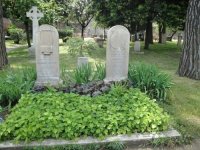
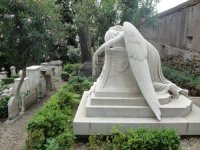
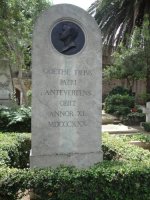
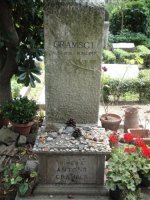
Wow! How did I miss this when I was last in Rome? I will have to make a point to visit this cemetery when I am in Rome again–especially since it is in the same area where I usually stay when I am there.
Hi Kim. Definitely put it on your list for next time. It really is an amazing place. Don’t worry though. Rome is filled with so many great places to see that there will always be a reason to get back to complete the list. I’ve been here for years and I’m still working on it…
I thnk the next time I am heading to Rome I will need to send you an email so you can guide me. 🙂
Sounds good, Kim! As you can probably tell, I love talking about Rome…
[…] artists, poets and writers in history. All you have to do to see this for yourself is to visit the Cemetery for Artists and Poets or stroll around town looking for the numerous plaques indicating that […]
[…] Italy’s praises. If you find yourself in Rome, be sure to take a look at my earlier post on the Cemetery of Artists and Poets to see the final resting place of many of them who called Rome […]
[…] Montemartini, you’re not far from Rome’s fabulous Cemetery of Artists and Poets. Why not combine the […]